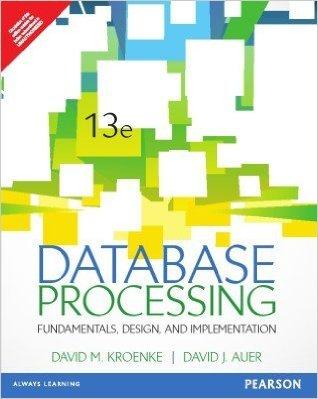Question
1. Consider the set of propositional formulas: U = {p ? q, (p ? q) ? r, p ? r} Provide an example of (i)
1. Consider the set of propositional formulas:
U = {p ? q, (p ? q) ? r, p ? r}
Provide an example of
(i) a non-satisfying interpretation
(ii) a satisfying interpretation
2. Provide an example of a formula A such that U ? A, where U is the set of formulas given in the Question 1.
3. Is the set of formulas of Question 1, {p ? q, (p ? q) ? r, p ? r}, closed under logical consequence?
4. Analyze the proof of the theorem and mention one rule of inference used in the proof.
Theorem Let n ? ?. If 7n + 6 is odd then n is odd.
Proof
Let us assume that n is not odd, that is, n is even. Then we have that n = 2k for some k ? ?. So
7n + 6 = 7(2k) + 6
= 2(7k) + 6
= 2(7k + 3)
From here we conclude that 7n + 6 is even in contradiction with the premise of the theorem. Therefore, if 7n + 6 is odd then n must be odd.
5.The proof in the Hilbert deductive system of a theorem known as conjunction elimination is provided. Write to the right of each step the number of the axiom or the name of the inference rule used. Note that the justification of the last step is already given.
Theorem conjunction elimination
Let A and B be arbitrary formulas of propositional logic. Then
? A ? B ? A
| 1. | ? A ? (B ? A) | |
| 2. | ? (B ? A) ? A | |
| 3. | ? (B ? A) ? A | |
| 4. | ? A ? B ? A | 3, definition of ? operator ((B ? A) ? A ? B) |
Step by Step Solution
There are 3 Steps involved in it
Step: 1

Get Instant Access to Expert-Tailored Solutions
See step-by-step solutions with expert insights and AI powered tools for academic success
Step: 2

Step: 3

Ace Your Homework with AI
Get the answers you need in no time with our AI-driven, step-by-step assistance
Get Started


